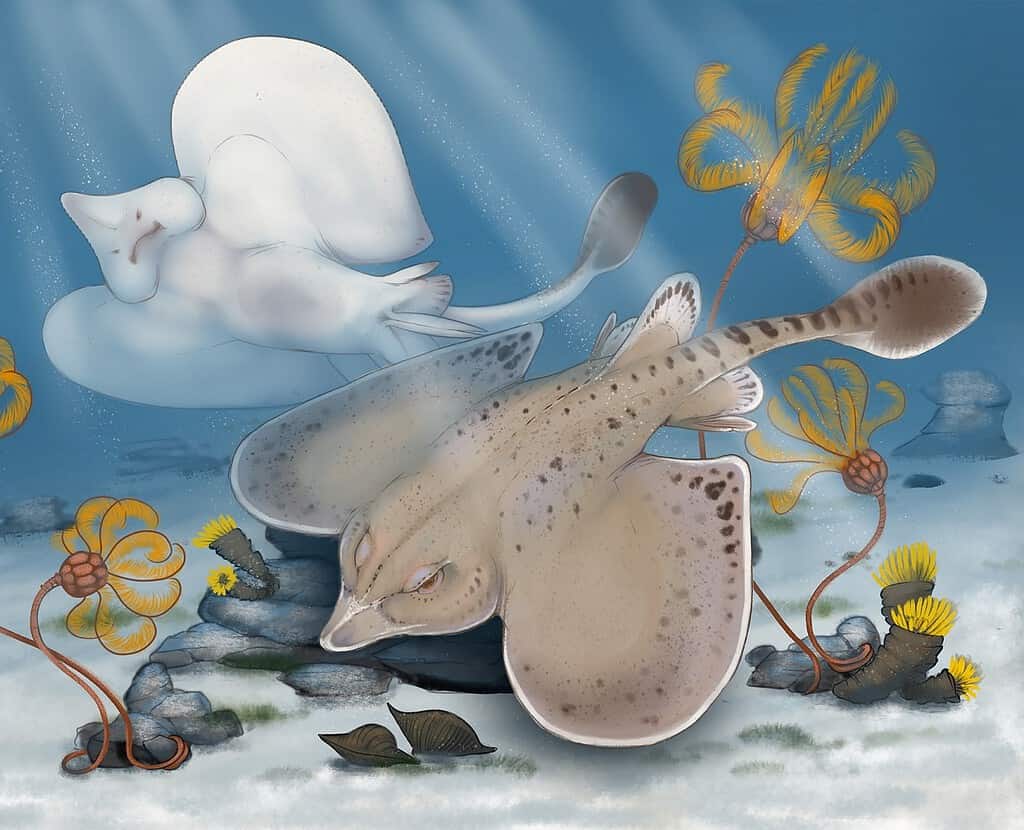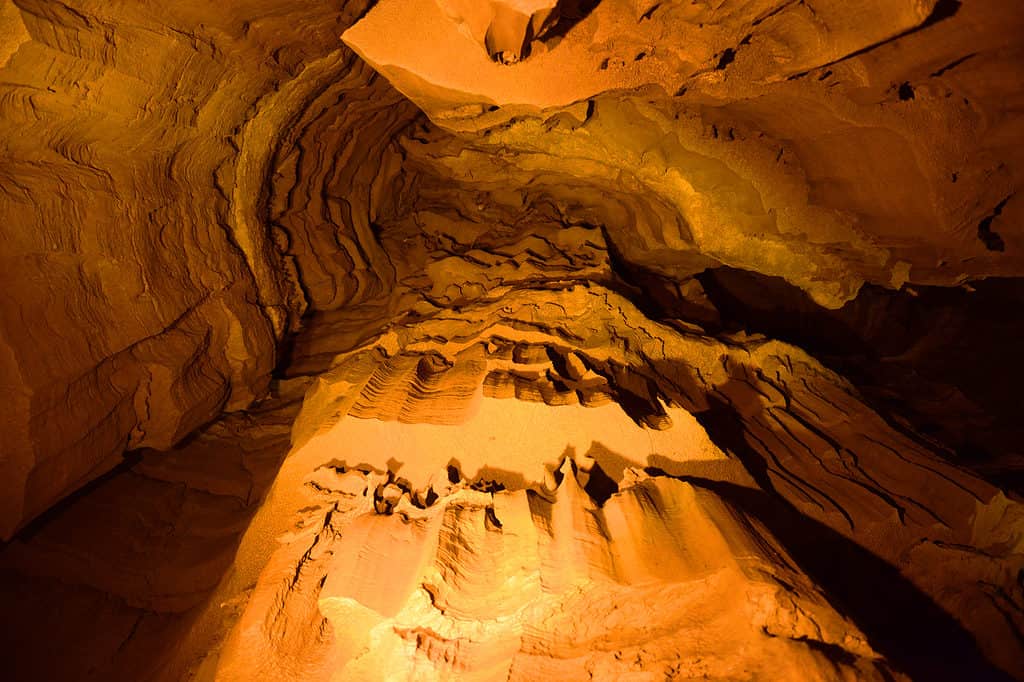Scientists have recently discovered a new shark species in a Kentucky cave. Kentucky is landlocked today, but it was once a warm and shallow sea, home to a diverse marine life population.
Since 2019, researchers have been uncovering a staggering amount of ancient shark fossils inside Kentucky’s Mammoth Cave. Recently, the National Park Service announced the discovery of a newly found species. The petalodont, also known as a petal-toothed shark, (Strigilodus tollesonae) was identified as once swimming in the ancient waters that used to flow over what is the bluegrass state today.

A new illustration of what the petalodont shark (
Strigilodus tollesonae) would have looked like swimming in an ancient ocean.
©Benji Paysnoe / Public domain – License
The scientists made the discovery when they spotted unusually shaped teeth embedded in the cave wall. Shaped like petals, or spoons, the teeth turned out to belong to a new species.
“We are excited to finally announce the discovery of our first new shark species at Mammoth Cave on NFD,” said Superintendent Barclay Trimble in a press statement. “Teams of geologists, paleontologists, park staff, and volunteers have been hard at work deep inside the cave identifying and collecting fossils since the paleontological resources inventory began in 2019. Their important research allows us to better understand the scope, significance, distribution, and management issues associated with the fossil record found within Mammoth Cave.”

Mammoth Cave National Park is the longest cave system in the world. The cave contains a wide variety of ice-age mammal and marine fossils.
©Wangkun Jia/Shutterstock.com
The Strigilodus tollesonae means “Tolleson’s scraper tooth”. The shark was named after park employee, Kelli Tolleson. Tolleson has been instrumental in helping paleontologists find fossil sites.
Newly Discovered Shark Species Is Related to Modern Ratfish
Strigilodus tollesonae is an extinct shark species that is an ancient relative of the modern spotted ratfish (chimaera). Ratfish are mysterious fish living in the deepest parts of the ocean and are part of the 420 million-year-old subclass Holocephali.
The teeth of the Strigilodus tollesonae are notable for their petal-like shape, which helped them grab onto hard shells. Furthermore, the inside of the tooth had ridges for crushing the shells and eating the prey inside.
Scientists believe the new species may have lived similar to a modern skate. The shark probably lived on a diet of small fish, bivalves, snails, and worms.
About Mammoth Cave National Park

The National Park Service offers tours of Mammoth Cave where visitors can learn about the cave’s history and geology.
©Wangkun Jia/Shutterstock.com
Mammoth Cave National Park in south-central Kentucky has an extensive cave system. Within the caves are fascinating limestone formations, immense chambers, and stunning geological formations. More than just a cave, the park offers campgrounds, hiking trails, canoeing, and horseback riding.
The cave is also home to many different species of fossils. Since the paleontological resources inventory began in 2019, over 70 species of ancient fish have been found in over 25 caves and passages.
The photo featured at the top of this post is © Benji Paysnoe / Public domain – License / Original
Thank you for reading! Have some feedback for us? Contact the AZ Animals editorial team.






